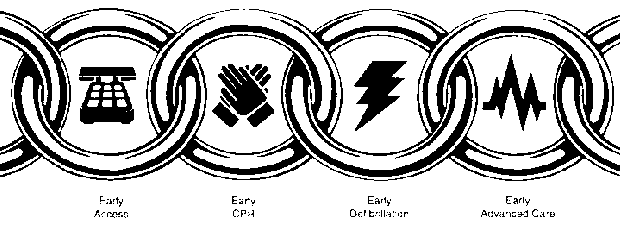The chain of survival is a metaphor to explain the
interdependence of a communitys emergency response to cardiac arrest. This
response is composed of four links. With a weak or missing link the result will
be poor chances of survival, despite excellence in the rest of the emergency
cardiac care system.

Early access consist of the following events after the
patients collapse:
q
Early identification of patients collapse who can
activate the emergency system
q
Recognition of unresponsiveness
q
Rapid telephone call to emergency medical services (EMS)
q
Rapid arrival of EMS responders
q
Identification of the arrested state
Cardiopulmonary
resuscitation (CPR) is the attempt to restore spontaneous circulation using the
technique s of chest wall compressions and pulmonary ventilation. It consist of
sequences of assessment followed by sequences of action. As a rule of
thumb we evaluate airway (A), breathing (B), and circulation (C).




Early defibrillation
Defibrillation
is a technique that uses an automated external defibrillator. This device by an
electrical shock tempts to restore the normal rhythm of the heart when
occurs an arrest of cardiac
muscle because of cardiac fibrillation.
Advanced cardiac life support (ACLS)
press left arrow in your browser for previous page
[Home]